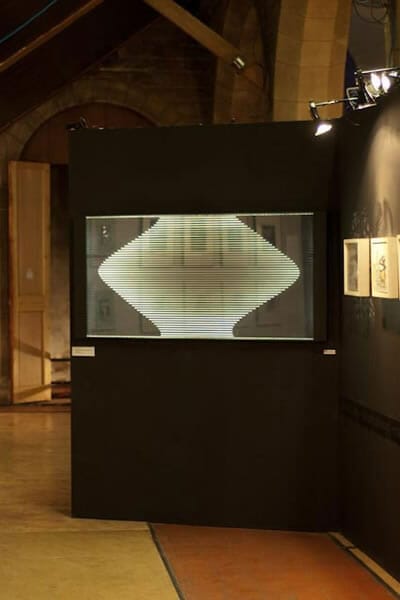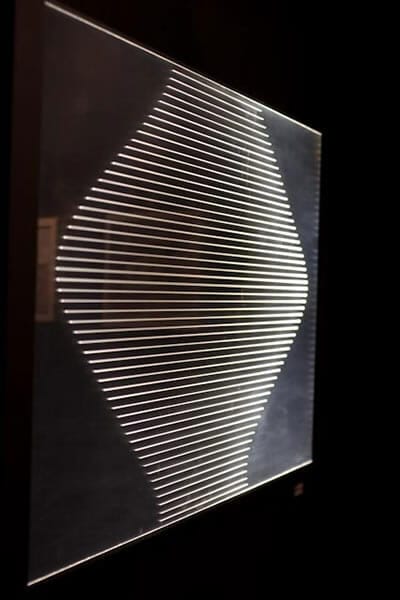Starscape was approached by artist Christine Morrison who was interested in using edge lit acrylic to create a piece of art which illustrated the changing patterns of daylight throughout the course of a year.
The design is simple, but attractive, with 52 parallel lines of varying length and thickness.
The optical properties of the cast acrylic (Perspex) are similar in some respect to those of optical fibre:
light introduced at one or more edge of the very clear material is reflected internally by the surface and remains within the panel. However, just as optical fibres “leak” light when their special cladding is damaged, so too the acrylic panel will leak bright light if the surface is engraved.
The result is brightly glowing lines which seem to float magically against a clear background, with the source of illumination something of a mystery to observers.
In this case the source of the illumination was three warm white LED strips butted up against the edge of the panel.
The strips are 50cm long, but one of the strips was divided in half to give two lengths of 75cm.
Blue LEDs might have been used, or even our RGB (colour changing) LED strips or tape, but Christine was happy with the pure white light. Another option would have been to use fibre optics and a halogen light source – useful in a permanent installation where there is no access for changing any failed LEDs – but LEDs are usually the simplest solution.


which combines a cast acrylic panel with Starscape’s low profile warm white LED strips.
